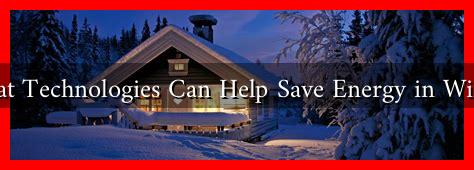-
Table of Contents
- What Technologies Can Help Save Energy in Winter
- Smart Thermostats: The Future of Home Heating
- Energy-Efficient Windows: Keeping the Cold Out
- Insulation Technologies: The Unsung Hero
- Smart Home Energy Management Systems
- Case Studies: Real-World Applications
- Conclusion: Embracing Energy-Saving Technologies
What Technologies Can Help Save Energy in Winter
As winter approaches, the demand for heating increases, leading to higher energy consumption and costs. However, advancements in technology offer innovative solutions to help save energy during the colder months. This article explores various technologies that can significantly reduce energy usage in winter, providing both environmental and economic benefits.
Smart Thermostats: The Future of Home Heating
Smart thermostats are revolutionizing how we manage heating in our homes. These devices learn your heating preferences and adjust the temperature accordingly, ensuring comfort while minimizing energy waste.
- Adaptive Learning: Smart thermostats can learn your schedule and adjust the temperature when you’re home or away. For instance, the Nest Learning Thermostat can save up to 15% on heating bills by automatically lowering the temperature when no one is home.
- Remote Control: Many smart thermostats allow users to control their heating systems via smartphone apps, enabling adjustments from anywhere. This feature is particularly useful for those who travel frequently.
- Energy Reports: These devices often provide insights into energy usage, helping homeowners identify patterns and make informed decisions about their heating habits.
Energy-Efficient Windows: Keeping the Cold Out
Windows are a significant source of heat loss in winter. Upgrading to energy-efficient windows can drastically reduce energy consumption.
- Double or Triple Glazing: These windows have multiple layers of glass with insulating gas in between, reducing heat transfer. According to the U.S. Department of Energy, replacing single-pane windows with double-pane can save homeowners up to $465 annually.
- Low-E Coatings: Low-emissivity (Low-E) coatings reflect heat back into the home while allowing sunlight to enter, maintaining warmth without sacrificing natural light.
- Window Films: For those not ready to replace their windows, applying window films can enhance insulation and reduce heat loss.
Insulation Technologies: The Unsung Hero
Proper insulation is crucial for maintaining a comfortable indoor temperature during winter. Innovative insulation technologies can significantly improve energy efficiency.
- Spray Foam Insulation: This type of insulation expands on application, filling gaps and cracks that traditional insulation may miss. It can reduce heating costs by up to 50%.
- Reflective Insulation: Often used in attics, reflective insulation reflects radiant heat away from living spaces, keeping homes cooler in summer and warmer in winter.
- Insulated Doors: Upgrading to insulated doors can prevent drafts and heat loss, contributing to overall energy savings.
Smart Home Energy Management Systems
Smart home energy management systems (HEMS) integrate various technologies to optimize energy use throughout the home.
- Real-Time Monitoring: HEMS provide real-time data on energy consumption, allowing homeowners to identify high-usage appliances and adjust their habits accordingly.
- Automated Controls: These systems can automate heating schedules based on occupancy and weather forecasts, ensuring energy is not wasted when it’s not needed.
- Integration with Renewable Energy: For those with solar panels, HEMS can optimize energy use by storing excess energy generated during the day for use at night.
Case Studies: Real-World Applications
Several cities and organizations have successfully implemented energy-saving technologies during winter, showcasing their effectiveness.
- New York City: The NYC Retrofit Accelerator program has helped thousands of buildings upgrade their heating systems and insulation, resulting in a 20% reduction in energy consumption.
- California’s Energy Upgrade Program: This initiative has encouraged homeowners to adopt energy-efficient technologies, leading to an estimated savings of 1.5 billion kWh annually.
Conclusion: Embracing Energy-Saving Technologies
As winter approaches, the need for effective energy-saving technologies becomes increasingly important. From smart thermostats and energy-efficient windows to advanced insulation and home energy management systems, there are numerous options available to help reduce energy consumption and costs. By embracing these technologies, homeowners can not only enhance their comfort during the colder months but also contribute to a more sustainable future.
For more information on energy-saving technologies, visit the U.S. Department of Energy’s Energy Saver website.

